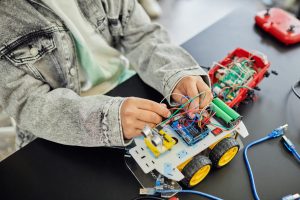Strategies for Reducing Student Dropout Rates Effectively
In today’s education system, student dropout rates are a growing concern. It is no secret that high school and college dropout rates have been steadily increasing over the years, and the negative effects of this trend are significant. Not only do high dropout rates have a significant impact on individual students, but they also have a detrimental effect on society as a whole. Fortunately, there are strategies that can be implemented to effectively reduce student dropout rates and provide students with the support they need to succeed in their education.
The Importance of Addressing Student Dropout Rates
Before discussing strategies for reducing student dropout rates, it is crucial to understand why this is such an important issue. Every student who drops out of high school or college is at risk of facing a lifetime of limited opportunities and economic struggles. According to a report by the Alliance for Excellent Education, students who drop out of high school are more likely to be unemployed, earn a lower income, and have a higher risk of incarceration compared to their peers who graduate.
The Impact of Student Dropout Rates on Society
The consequences of high student dropout rates also have an impact on society as a whole. As the workforce becomes increasingly competitive, high school and college dropouts are at a disadvantage when it comes to finding employment. This leads to a decrease in the overall productivity and economic growth of a country. Furthermore, individuals with limited education are less likely to participate in civic and community activities, leading to a weaker social fabric.
Strategies for Reducing Student Dropout Rates
Improve Student Engagement and Support
One of the most effective ways to reduce student dropout rates is to provide students with a supportive and engaging learning environment. This can be achieved through various initiatives such as personalized learning, smaller class sizes, and student support services. These strategies can help students feel more connected to their education and provide them with the necessary support to overcome any challenges they may face.
Strengthen Communication and Relationships
A critical factor in reducing student dropout rates is building strong relationships between students, teachers, and parents. Educators must communicate regularly with students and parents to identify any potential issues and provide appropriate support. This can be achieved through parent-teacher conferences, regular progress reports, and open communication channels.
Provide Career and College Readiness Programs
To prevent students from dropping out of high school or college, it is crucial to help them envision a future beyond their education. Career and college readiness programs can provide students with the necessary skills and knowledge to pursue their desired career paths successfully. These programs also encourage students to see the value in their education and motivate them to stay in school.
Incorporate Technology and Innovative Teaching Methods
In today’s digital age, technology plays a significant role in education. By incorporating technology and innovative teaching methods, educators can make learning more engaging and relevant to students. This can help prevent students from becoming bored or disengaged from their education, which is a common reason for dropping out.
Address Social and Emotional Needs
It is essential to recognize that student dropout rates are often linked to social and emotional factors. Students who feel disconnected from their peers, struggle with mental health issues, or experience family problems are at higher risk of dropping out. By implementing programs that address these needs and providing a supportive environment, students are more likely to thrive in their education.
In Conclusion
In conclusion, reducing student dropout rates is crucial for both the individual and society as a whole. By incorporating strategies that improve student engagement, strengthen relationships, provide career and college readiness, utilize technology, and address social and emotional needs, we can help students stay motivated and succeed in their education. It is essential to remember that preventing dropout rates is a collective effort, and educators, parents, and students must work together to ensure every student has the opportunity to achieve their full potential.









